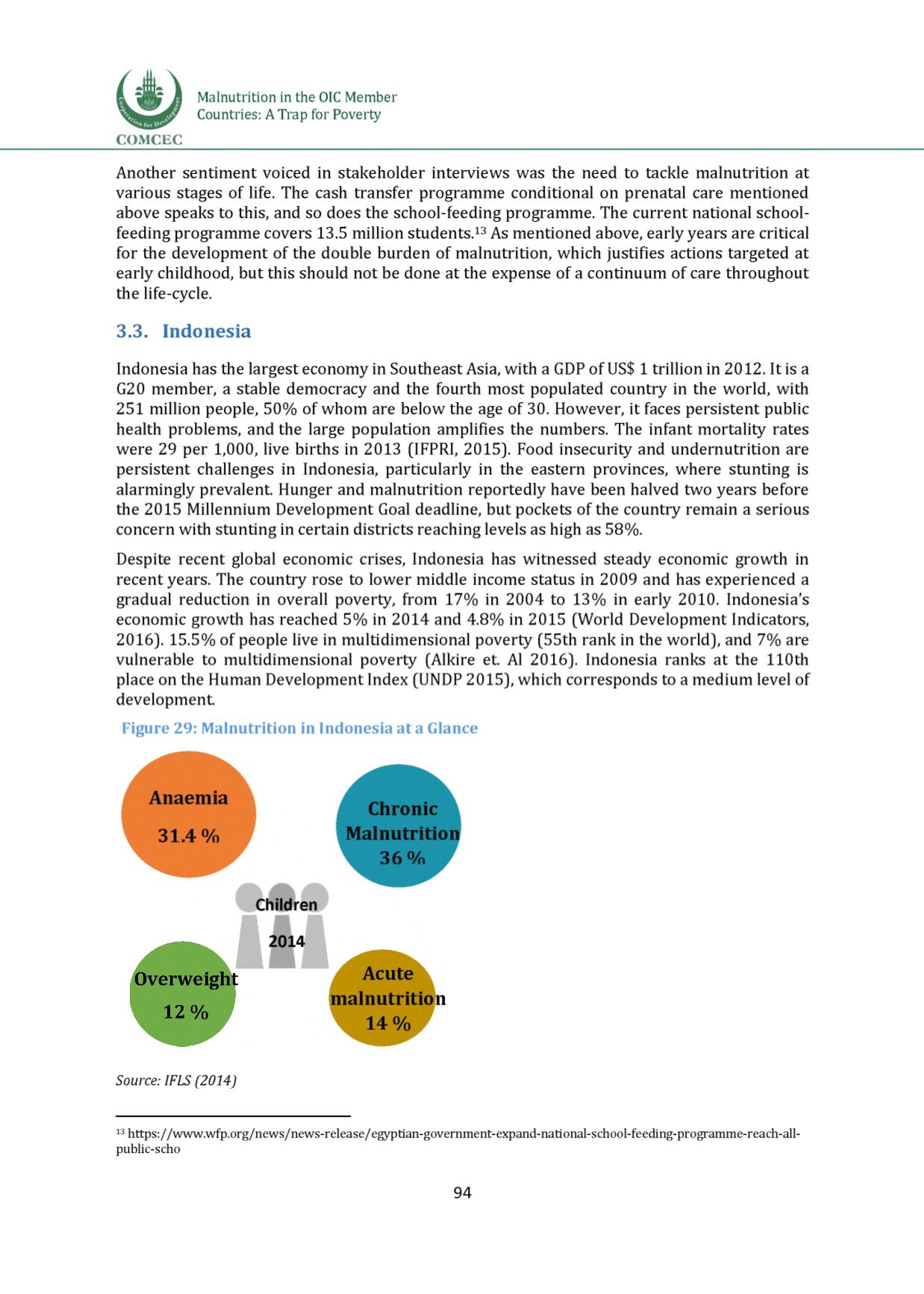

COMCEC
Malnutrition in the OIC Member
Countries: A Trap for Poverty
Another sentiment voiced in stakeholder interviews was the need to tackle malnutrition at
various stages of life. The cash transfer programme conditional on prenatal care mentioned
above speaks to this, and so does the school-feeding programme. The current national school
feeding programme covers 13.5 million students
.13
As mentioned above, early years are critical
for the development of the double burden of malnutrition, which justifies actions targeted at
early childhood, but this should not be done at the expense of a continuum of care throughout
the life-cycle.
3.3. Indonesia
Indonesia has the largest economy in Southeast Asia, with a GDP of US$ 1 trillion in 2012. It is a
G20 member, a stable democracy and the fourth most populated country in the world, with
251 million people, 50% of whom are below the age of 30. However, it faces persistent public
health problems, and the large population amplifies the numbers. The infant mortality rates
were 29 per 1,000, live births in 2013 (IFPRI, 2015). Food insecurity and undernutrition are
persistent challenges in Indonesia, particularly in the eastern provinces, where stunting is
alarmingly prevalent. Hunger and malnutrition reportedly have been halved two years before
the 2015 Millennium Development Goal deadline, but pockets of the country remain a serious
concern with stunting in certain districts reaching levels as high as 58%.
Despite recent global economic crises, Indonesia has witnessed steady economic growth in
recent years. The country rose to lower middle income status in 2009 and has experienced a
gradual reduction in overall poverty, from 17% in 2004 to 13% in early 2010. Indonesia's
economic growth has reached 5% in 2014 and 4.8% in 2015 (World Development Indicators,
2016). 15.5% of people live in multidimensional poverty (55th rank in the world), and 7% are
vulnerable to multidimensional poverty (Alkire et. Al 2016). Indonesia ranks at the 110th
place on the Human Development Index (UNDP 2015), which corresponds to a medium level of
development.
Figure 29: Malnutrition in Indonesia at a Glance
Source: IFLS (2014)
13https:/
/www.wfp.org/news/news-release/egyptian-government-expand-national-school-feeding-programme-reach-all- public-scho94
















